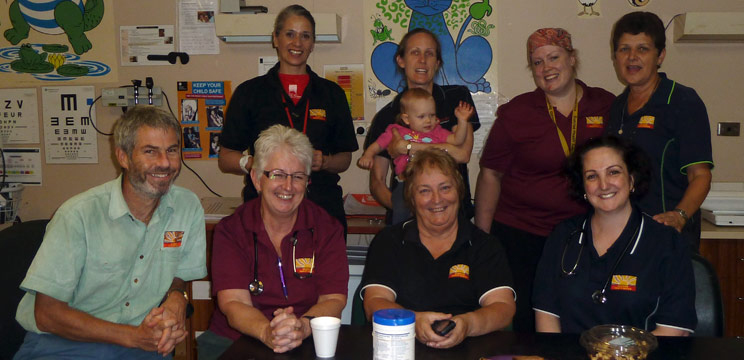The Douglas and Lola Douglas Scholarship in medical science is offered as a ‘top up’ scholarship to a high-ranked PhD candidate awarded a National Health and Medical Research Council Training Scholarship in either Indigenous or primary health care, with preference given to Indigenous health research.
The scholarship was made possible through a generous bequest made by Lola Rachel Maude Douglas, a philanthropist with a keen interest in medical research. Below are edited summary reports from two previous winners of the scholarship; Dr Asha Bowen (2010) and Michael Binks (2011).
Dr Bowen’s doctoral thesis reports the results of a large, non-inferiority, randomised controlled trial on the treatment of skin sores in remote Indigenous children.
Skin sores are common (prevalence 10–70%), highly transmissible, painful and underlie diseases with potential severe consequences including rheumatic heart disease, acute post-streptococcal glomerulonephritis, bone and joint infections and bacteremia.
Skin sores are caused by two bacteria, Streptococcus pyogenes and Staphylococcus aureus, both of which are implicated in the severe consequences of untreated sores. However, prior surveillance had shown only a small number of Indigenous children with sores were being treated. Reasons for this include the pain of the intramuscular injection that has been the standard treatment for more than two decades and the normalisation of sores. In addition, there were concerns about the efficacy of penicillin treatment for sores in the era of rising methicillin-resistant Staphylococcus aureus (MRSA) prevalence, as S. aureus was already highly resistant to penicillin. A better treatment that dealt with both of these factors was needed.
The randomised controlled trial compared two short courses of an oral antibiotic (trimethoprim-sulphamethoxazole) with the standard treatment of impetigo with intramuscular injection (benzathine penicillin G). Non-inferiority of the oral trimethoprim-sulphamethoxazole was demonstrated providing a new oral, short course, palatable treatment option for impetigo, which also treats MRSA.
This is great news for children in remote Indigenous communities and has been welcomed on feedback visits to each of the communities where participants were enrolled in the study. It is the first randomised controlled trial to study the treatment of impetigo in Australian Indigenous children and adds to the evidence base on which guidelines are built. Regional and national guidelines for the treatment of impetigo in remote Indigenous children are now being updated with these findings.

One in five Indigenous infants living in the Northern Territory is hospitalised with an acute lower respiratory infection (ALRI) in the first year of life. Whilst ALRI has been associated with vitamin D insufficiency, there is a paucity of vitamin D data in this region.
We conducted a prospective birth cohort study of 109 Indigenous mothers and infants in the NT (2006-2011). The study’s main aim was to determine whether Indigenous children with cord blood 25OHD3 <75nmol/L were more likely to be hospitalised with ALRI during the first year of life than Indigenous children with cord blood 25OHD3 >75nmol/L. Sixty seven of the 84 (80%) available cord bloods had 25OHD3 levels <75nmol/L.
Fewer than expected infants (8%; 7/84) with cord blood samples were hospitalised with at least one episode of an ALRI. Seven of the 67 infants (10%) with cord blood 25OHD3 <75nmol/L compared to 0/17 infants (0%) with cord blood 25OHD3 >75nmol/L were subsequently hospitalised with an ALRI (p=0.164).
Mean cord blood 25OHD3 was 37nmol/L among the seven infants hospitalised with an ALRI and 56nmol/L among the 64 not hospitalised at all (p=0.025). Mean cord blood 25OHD3 was 51nmol/L among the 13 infants hospitalised for other reasons.
Subgroup analysis revealed that remote infants had both lower vitamin D levels and more ALRI hospitalisations; however there was no association between cord blood vitamin D levels and ALRI hospitalisations among remote infants, suggesting the association may be confined to urban Indigenous populations.
In summary vitamin D insufficiency (<75nmol/L) was common among Indigenous mothers/infants at delivery (45% in venous blood and 80% in cord blood) and vitamin D levels were lower among participants living remotely. With a smaller than expected ALRI event rate we were unable to show a conclusive association between cord blood vitamin D levels and infant ALRI hospitalisation.
© 2026 Australian Academy of Science